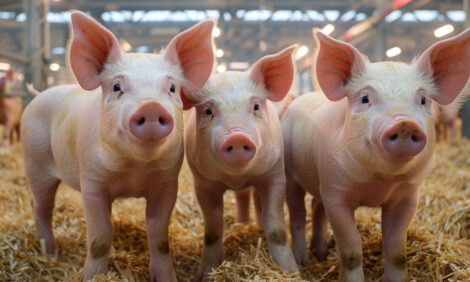



AASV: Storms can affect PED and PRRS transmission
Weather events may increase the likelihood of biosecurity breachesEditor's note: The following is from a poster presentation by Igor A. D. Paploski, DVM, PhD, and colleagues, Department of Veterinary Population Medicine, University of Minnesota, during the 2024 annual conference of the American Association of Swine Veterinarians.
Despite the wealth of knowledge regarding risk factors for porcine epidemic diarrhea (PED) and porcine reproductive and respiratory syndrome (PRRS), weather risk factors historically receive little attention to their association with the occurrence of both diseases.
We conducted a case-control study to investigate if the frequency of exposure to extreme weather was different between cases (farms experiencing new outbreaks of PRRS or PED) and controls (farms not experiencing new outbreaks of PRRS or PED). Outbreaks of both PED and PRRS were captured by the Morrison Swine Health Monitoring Project (MSHMP). County-level extreme weather event data were obtained from the National Oceanic and Atmospheric Administration storm events database for the states in the Southeast US.
We modelled the association between weather events and PED/PRRS occurrence using a 1:4 unmatched logistic regression. For each case (a farm in each week in which an outbreak occurred), four different controls (farm in weeks in which an outbreak had not occurred) were randomly selected. For each of the analyzed weather events (flood, heavy rain, high wind and tornadoes), we ran 10 different models, with each model including a different lag of time between exposure and outbreak occurrence, ranging from lag 1 (if the weather event occurred during the outbreak week), to lag 10 (if the weather event occurred nine weeks before the outbreak).
Analyses were run on three periods of time based on trends on PED incidence: epidemic (2014 – 2015); endemic (2016 – 2019) and overall (2014 – 2019).
PED and weather events
We found that certain extreme weather events are consistently associated with the occurrence of PED. During the endemic period, farms located in counties exposed to floods had 3 to 4 times higher odds of having a PED outbreak in the 4 to 9 weeks after the flood compared to the controls. We also saw increased odds of PED occurrence after heavy rain (endemic period) and high wind (endemic period).
The association between weather events and PRRS was less clear. We found that PRRS cases only had increased odds of being exposed to high winds in 2016 – 2019. Overall, associations tended to be weak.
Biosecurity lapses
The exact mechanism by which each weather event influenced the risk of disease occurrence was not possible to investigate, but weather events may influence outbreak occurrence by disrupting aspects of farm management, for example, by increasing the likelihood of biosecurity breaches or changing truck routes and delivery schedules.
We suggest that swine-producing companies in the US develop biosecurity protocols to account for and mitigate the impact of extreme weather events. These could include strengthening protocols for visits of maintenance teams assessing physical damages to farms, and more stringent biosecurity practices in the immediate weeks following an extreme weather event.









